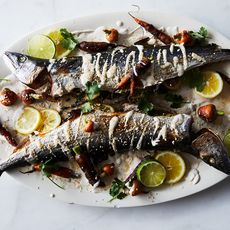I am a huge advocate for eating seafood sustainably. Though we Americans have expanded the amount of healthy fish we consume, it’s dangerously focused on fish that are rapidly being eaten into extinction: bluefin tuna, cod, swordfish, even wild striped bass. Other seafood we have a passion for, such as shrimp and salmon, are often farm-raised in less than ideal conditions.
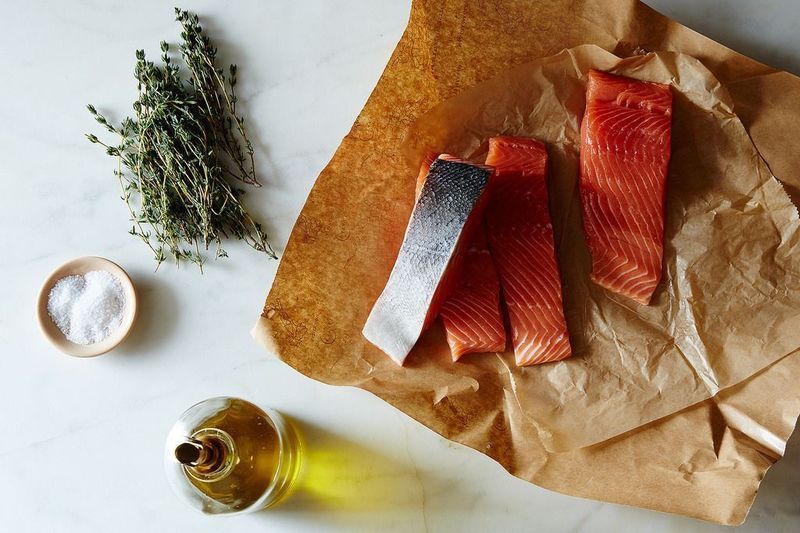
by Stephen Satterfield
So if you want to be a conscious consumer of sustainable fish, what do you do? First, I think, is to broaden your horizon in terms of flavor. Second: Check out the Monterey Bay Aquarium Seafood Watch, where they list the ever changing fish and seafood we should be eating, avoiding or eating with some care.
When fish is fresh, it’s delicious, whether it’s highly sought after blue fin tuna or oh-so-abundant (again) Boston mackerel. Freshness, not rarity, is the most important factor in the flavor of a fish. Mackerel, like all darker, oilier fish—the fish that are considered the most healthy—tends to degrade faster than a cod or halibut. If you’ve eaten mackerel or bluefish a little past its prime, you probably didn’t like it much. But if you taste these fish truly fresh, just a few days from swimming in the water, you will discover how rich in flavor mackerel is. I love mackerel grilled outside on the fire in the summer, where the charcoal blisters the skin, but I also find it easy enough to roast whole in a hot oven.
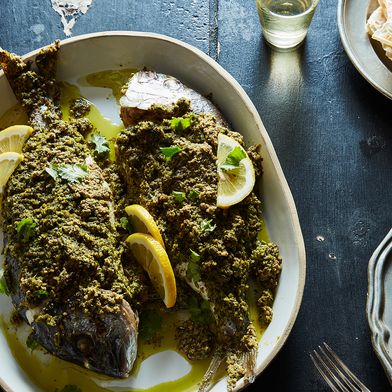
by Sara Jenkins
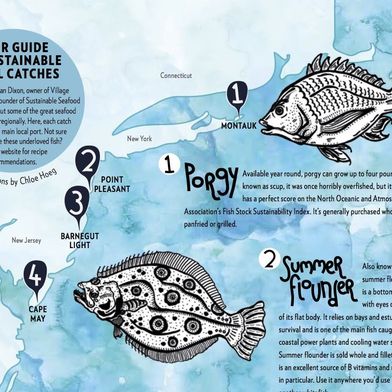
by Caroline Lange
I am a fan of roasting whole fish instead of fillets as I believe cooking anything on the bone, be it chicken, lamb, steak, or fish, improves the flavor, but you could roast fillets instead, simply adjusting the cooking time to about two minutes less. (The old-fashioned rule of cooking fish for 10 minutes an inch rarely lets me down.) I love tahini with grilled fish; the creamy, rich texture pairs well with grilled flavors. In fact, I love tahini so much it’s the kind of thing I try to always have on hand in my fridge, ready to go, to spoon it over hot rice or lentils or use in a quick salad dressing. Here, I just pool it underneath the whole mackerel and drizzle a little more over simple roasted carrots. It would be delicious over some steamed potatoes as well, if you didn’t want to go to the bother of pan roasting carrots. I always think fresh herbs brighten all the flavors of a dish, and here, I use cilantro.
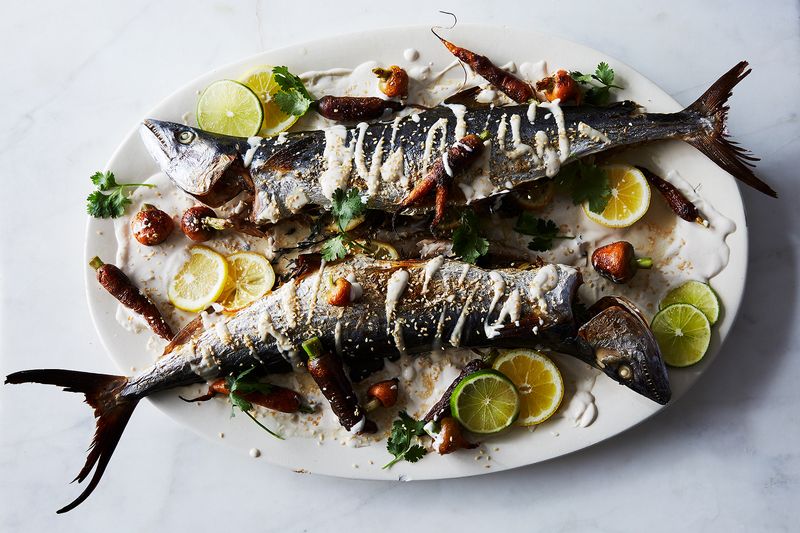
Photo by Bobbi Lin
Boston mackerel is pretty easily sourced in the eastern Atlantic from Newfoundland to North Carolina. If you can’t find it where you live, ask your fishmonger for bluefish, herring, or a different type of mackerel—but adjust cooking time for size, as Spanish and King mackerels are larger than Boston. Make sure the fish is bright, eyes clear, gills red, skin shiny and colorful. You’re going to be cooking all of it, so choose well.
Roasted Mackerel with Tahini Sauce and Pan-Roasted Carrots
By Sara Jenkins
For the Fish
-
4
whole boston mackerel, gutted (about 3/4 to a pound, each) -
1
lemon -
4
sprigs parsley -
4
sprigs thyme -
4
cloves of garlic, smashed -
1/4
cup extra virgin olive oil -
salt and pepper
For the Sauce and Carrots
-
1
clove garlic -
1/4
cup tahini -
juice of 1 lemon
-
water
-
1
bunch of the smallest carrots you can find -
1/4
cup olive oil -
salt and pepper
-
1
bunch cilantro -
2
tablespoons toasted sesame seeds
(via Food52)

